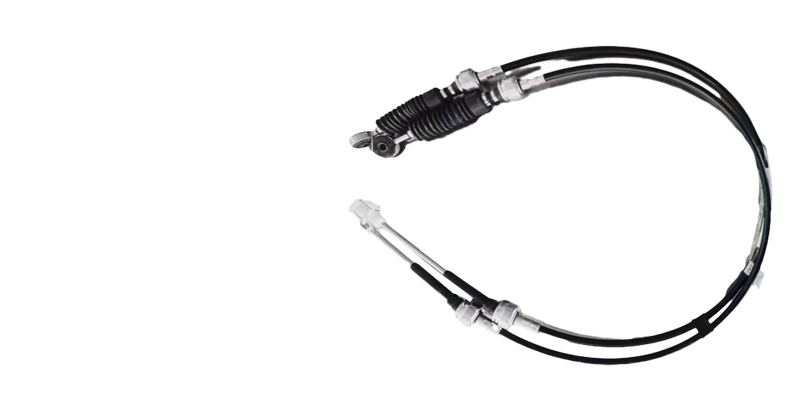hand brake cable
Understanding Hand Brake Cables Function, Importance, and Maintenance
The hand brake, often referred to as the emergency brake or parking brake, is an essential component of any vehicle's braking system. It serves a critical function in ensuring that the car remains stationary when parked, especially on inclines or declines. At the heart of this mechanism lies the hand brake cable—a crucial part that often goes unnoticed until it fails. This article aims to delve into the function, importance, and maintenance of hand brake cables, ensuring drivers have a comprehensive understanding of this vital component.
Function of Hand Brake Cables
The hand brake cable is a flexible wire that connects the vehicle's hand brake lever, usually located within the driver's compartment, to the rear brake assembly. When the driver pulls the hand brake lever, it causes the cable to tighten and subsequently engages the brake pads on the rear wheels. This action immobilizes the vehicle, preventing it from rolling away when parked.
Hand brake cables operate through a simple mechanism. As the lever is pulled, the cable transmits the force to the rear brakes. In most vehicles, this action will either mechanically or electronically engage the brake caliper or drum assembly, depending on the type of brake system installed. The effectiveness of the hand brake largely depends on the proper functioning of the cable; if the cable is frayed or stretched, it may not apply sufficient pressure to the brakes, leading to a dangerous situation.
Importance of Hand Brake Cables
The importance of a functioning hand brake cable cannot be overstated. It plays a crucial role in vehicle safety and control. When parked on an incline, a reliable hand brake prevents unintended rolling, which can lead to accidents, property damage, or injury to pedestrians. Furthermore, in emergency situations where the primary brake system fails, an operational hand brake can help bring the vehicle to a stop, albeit with limited effectiveness.
Additionally, regulatory standards in many regions mandate that all vehicles must have a functional emergency braking system, reinforcing the significance of maintaining the hand brake and its components. Neglecting the hand brake cable can result in increased repair costs, potential fines, or even liability in the event of an accident.
Signs of Hand Brake Cable Wear
Like all mechanical components, hand brake cables are subject to wear and tear. Drivers should be vigilant for several signs indicating that the cable may require maintenance or replacement
1. Increased Lever Travel If the hand brake lever feels loose or requires more effort to engage, this could mean the cable is stretched or worn out. 2. Poor Holding Ability If the vehicle rolls slightly despite the hand brake being engaged, this indicates that the cable may not be applying sufficient pressure to the brakes.
hand brake cable

3. Fraying or Damage A visual inspection may reveal signs of fraying, rust, or corrosion on the cable, indicating that it may soon fail.
4. Unusual Noises Strange sounds, such as grinding or clicking, when engaging or disengaging the hand brake can be warning signs of cable issues.
Maintenance and Replacement
To ensure the longevity and effectiveness of the hand brake cable, regular maintenance is essential. Here are a few tips
1. Routine Inspections Regularly check for signs of wear or damage. This includes looking for fraying and ensuring the cable is properly lubricated and free of rust.
2. Adjustments Some hand brake systems come with an adjustment mechanism. If the lever feels loose, adjusting the tension can restore its effectiveness.
3. Professional Servicing When in doubt, consult a professional mechanic. They can assess the condition of the hand brake cable and recommend repairs or replacements as needed.
4. Replacement If a cable is significantly worn or damaged, it should be replaced promptly. This is not a DIY task for most drivers, as proper installation is critical for ensuring safety.
Conclusion
The hand brake cable is a small component with significant responsibility in vehicle safety. Understanding its function, recognizing the signs of wear, and conducting regular maintenance are crucial for ensuring the reliability of your vehicle's hand brake system. By being proactive about care and attention to this essential part, drivers can minimize their risk of accidents, uphold safety standards, and enhance their overall driving experience. Remember, a well-maintained hand brake system is not just a recommendation—it's a necessity.
-
Workings of Clutch Pipe and Hose SystemsNewsJun.04,2025
-
The Inner Workings of Hand Brake Cable SystemsNewsJun.04,2025
-
The Secrets of Throttle and Accelerator CablesNewsJun.04,2025
-
The Hidden Lifeline of Your Transmission Gear Shift CablesNewsJun.04,2025
-
Demystifying Gear Cables and Shift LinkagesNewsJun.04,2025
-
Decoding Clutch Line Systems A Comprehensive GuideNewsJun.04,2025
